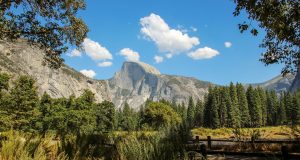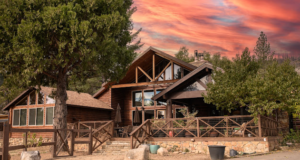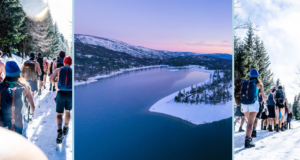Seeing all of that water coming out of Stevenson Falls is something to behold but we had a big surprise when we saw the first diverse and colorful displays of wildflowers of the season!
Where: Sierra National Forest Highlights: Water crashing down Stevenson Falls into a cool pool of water is well worth taking this hike but when the wildflowers start to come out, it really makes this hike special.
From North Fork, we drove down Road 225 and followed the road as it traveled above Redinger Lake, parking on the Madera side of the bridge that crosses Redinger Lake. We walked across the bridge that crosses Redinger Lake, then a couple of miles down the road to a gate where the road is closed after it. You can cut off some walking miles by driving your car to this point, starting your hike from this gate and it will be about 5 miles round trip to hike to the falls.
This could be a good dog hike if you have the right type of dog. My dog Sally is not that type of dog so she stayed home on this hike. I will go into more depth at the end of this blog on plusses and minuses of dog hiking in this area.
We hadn’t walked too far up the road when we came to a slightly cooler microclimate with a tall wall of rock alongside the road. There were many of these very cool looking succulents named Dudleya.
There was a bit of wind when we started our hike and as a result, there were no reflections in Redinger Lake for us to take pictures of but as we climbed, that wind dropped off and we could start to see a calmer lake. Redinger Lake was constructed by Southern California Edison in 1951 on the South Fork of the San Joaquin River above Kerckhoff Reservoir.
It is part of the Big Creek Hydroelectric Project which includes a system of lakes, tunnels, steel penstocks and power houses that uses water to generate electricity. It has a normal water surface of 456 acres and a maximum capacity of 35,000 acre feet. The reservoir is named after David H. Redinger who helped plan and execute the Big Creek Hydroelectric project.
We walked around a corner and were surprised to see this western redbud, Cercis occidentalis, just starting to open up its flowers.
Joanna Clines, Botonist extrodinaire with the Sierra National Forest, was a huge help in identifying all of the flowers this week that we saw on our hike. I bet you were pretty impressed with me using their common and scientific names, weren’t you? Well, it is all due to Joanna identifying them for me. The spider lupine was gorgeous, so healthy and such a vibrant color.
We reached the bridge that crosses Stevenson Falls. 300 foot of the cascading fall is above the road and another 200 feet are below the road. Sometimes the flow is so strong that that it flows on the bridge, resulting in this bridge being impassable.
It is really hard for me to capture Stevenson Falls in one picture so I thought I would experiment with a short video that may help you experience Stevenson Falls a little better. http://youtu.be/h8awBXhwpAs
The view a little farther up the road captures the entire series of falls a little better. We decided to walk farther up the road, making it up to where we reached Hooker’s Creek, then turned around, had our lunch at Stevenson Falls and walked back down the road.
This yellow flower is Eastwood’s fiddleneck, Amsinckia eastwoodiae.
The afternoon sun had opened up a lot of flowers that we didn’t see in the morning on our hike up. Gail is really good at taking those super close up pictures of flowers. Here she is taking macros of spider lupine.
We were surprised to see a family riding their bikes up the road and they had the cutest little trailer they were hauling. Inside was their young son and a dog! The dog’s paw pads had become a little worn from the paved road and the dog was having a little break.
I watched them as they headed up the road toward Six Lake. The dog was whining, wanting to get out and run, so they stopped and out jumped a German Shorthair ready to get some exercise.
I have a hard time successfully photographing paintbrush. For some reason, the vibrant color tends to blur the camera lens most of the time. I was lucky this time though with this wavyleaf indian paintbrush, Castilleja applegatei subsp. Pinetorum.
This was my favorite flower of the day. Arching rockcress, Boechera arcuata (formerly Arabis sparsiflora ssp. arcuata)
This is Miners lettuce Claytonia parviflora. Joanna Clines pointed out that there are two kinds of Miners lettuce that can be a challenge to tell the difference but she said that you can see how the basal leaves are almost the same width the whole way on this one. She said that C. perfoliata has quite different leaves because they expand into definite leaf blades. Otherwise these 2 “miner’s lettuce” species look about the same.
And we spotted our first poppies of the year. This is a tufted poppy, Eschscholtzia caespitosa.
There is a wide spot in Mill Creek near where the gate closes the road traffic and we usually see some great reflections in it. Today was no exception. I just love these dry, brown grasses and the reflections trick your eye, making it a challenge to determine where the vegetation and the reflection begin.
As I mentioned at the beginning, this hike could potentially be a good hike to take with your dog, if they are the type of dog that stays with you on the road. My Sally dog would want to chase squirrels and most of the road drop offs are very steep. I am afraid that Sally would dive off there while chasing some critter and hurt herself.
This is also rattlesnake haven and there is quite a bit of poison oak in the first part. There is only one fairly good watering spot at Mill Creek, so you would need to pack water for your dog. The hike is entirely paved and this can be tough on a dog’s paw pads if they aren’t toughened up to this type of use. That pavement can also be very hot in the summer. If you take a dog to the falls, there is a metal grid bridge across the falls that a dog will not be able to cross because the grids are very wide and you would need to carry your dog across this if you wished to go farther.
Sources:
Distance: 14.9 Miles
Difficulty: Moderate
Elevation Range: 1,404′ – 2,334′
Date: February 25, 2014
Maps: Auberry, Sierra National Forest
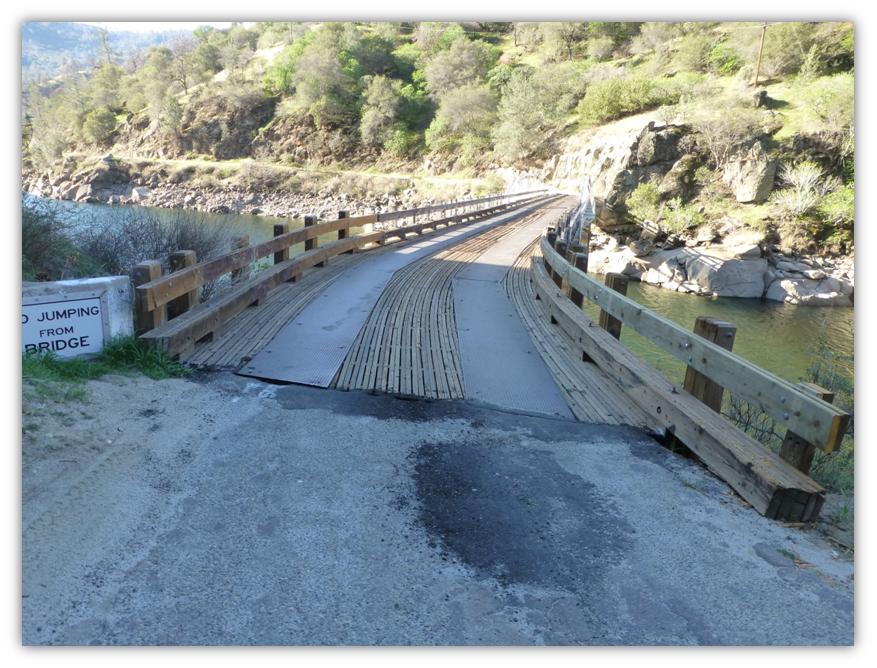
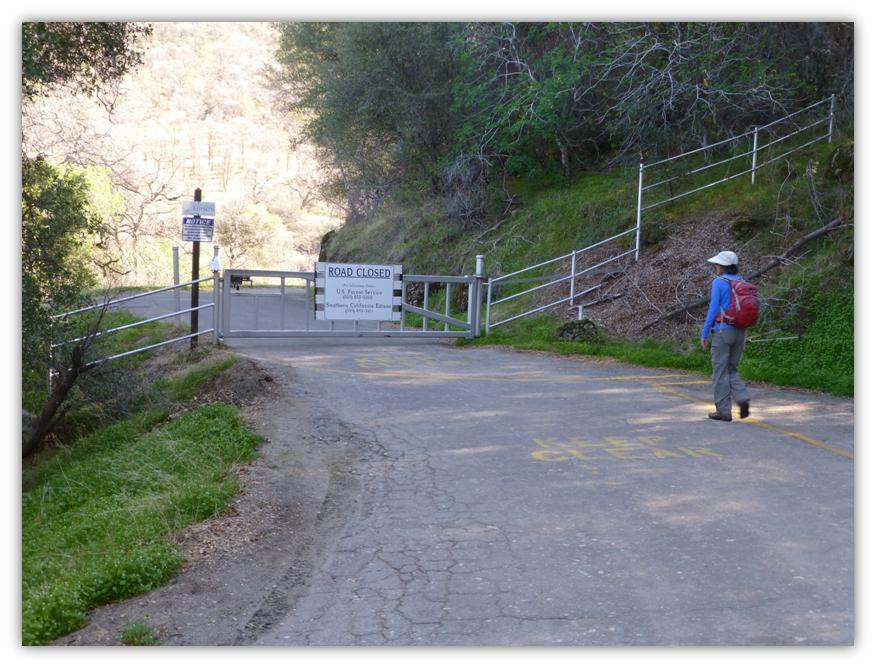
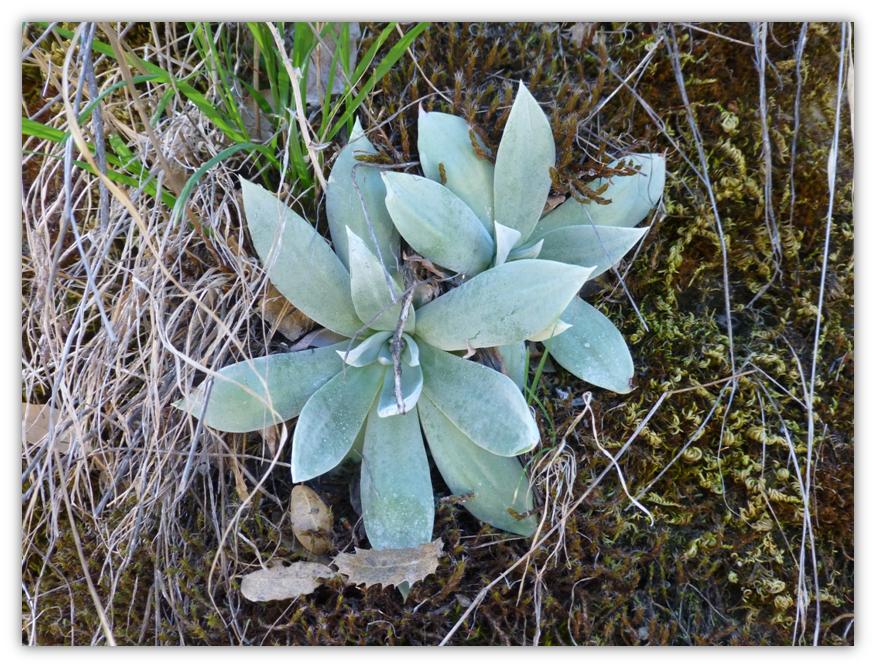
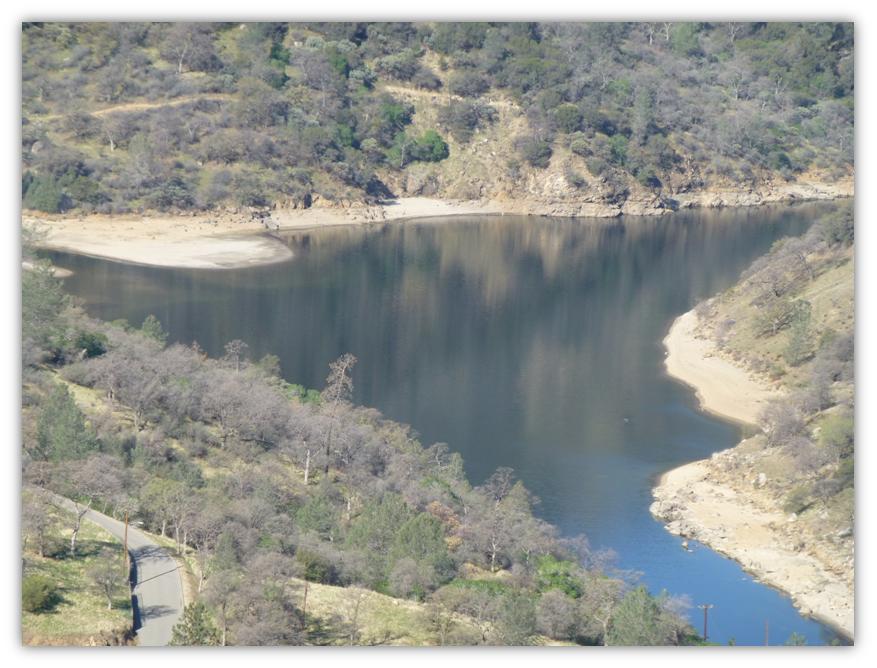
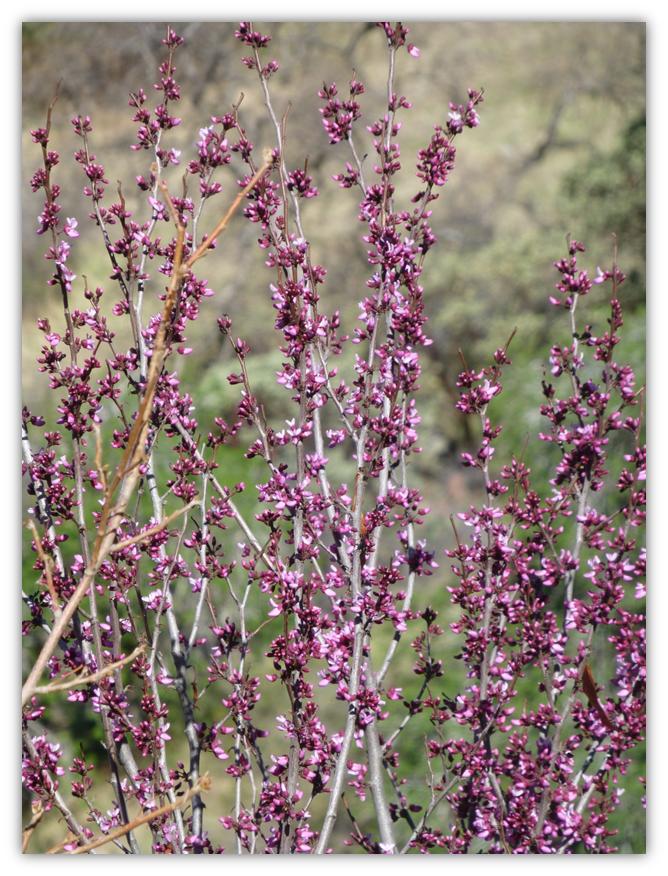
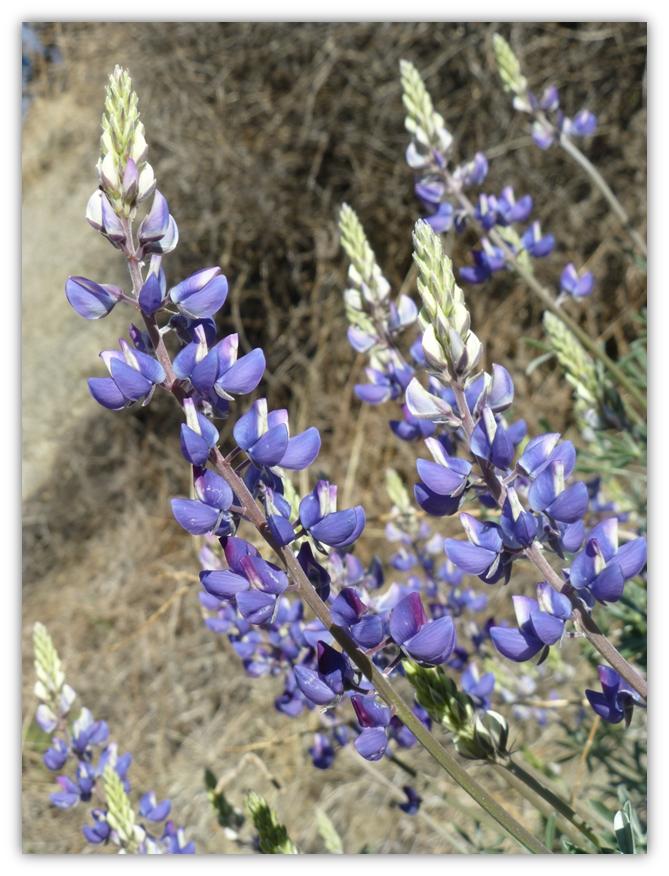
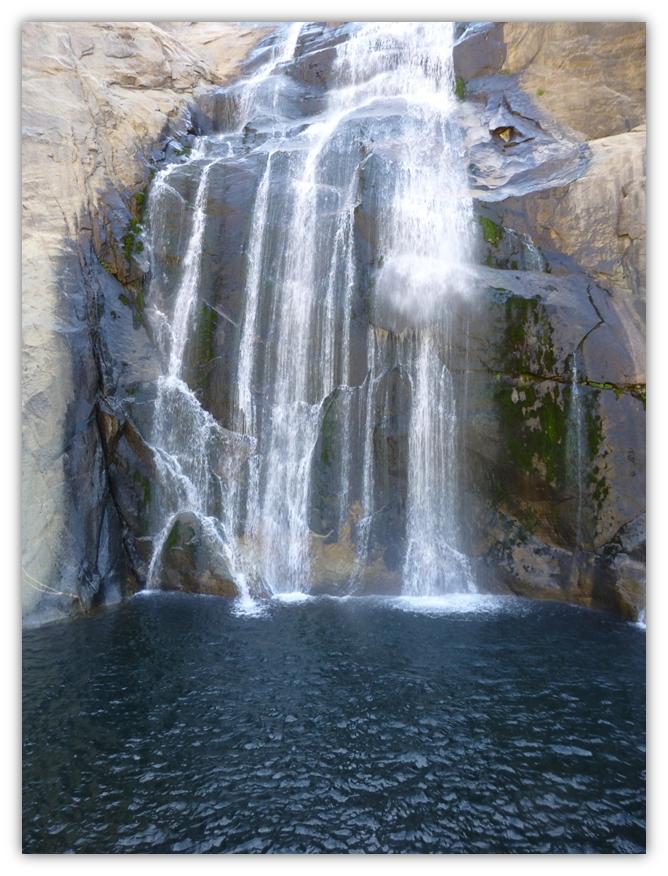
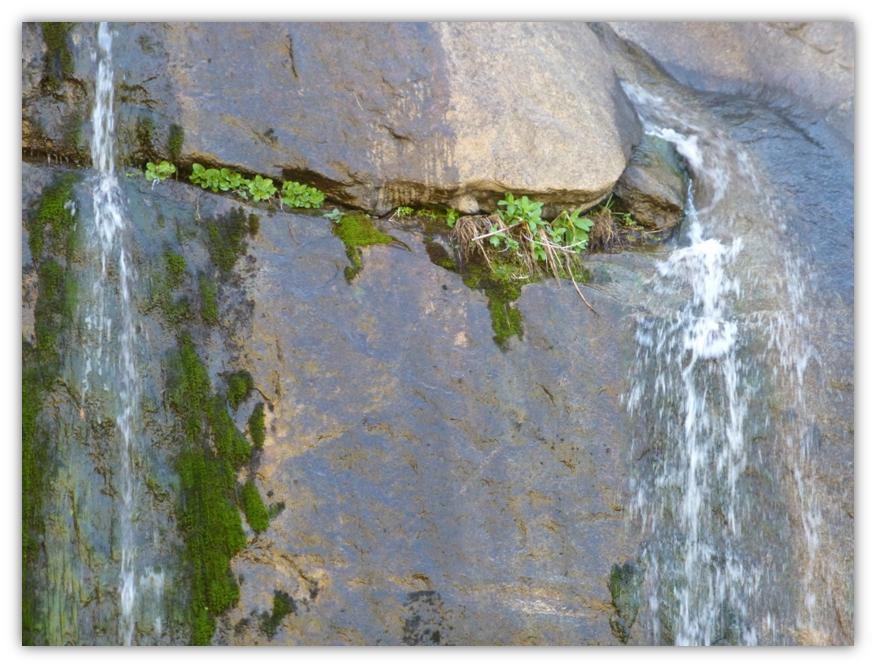
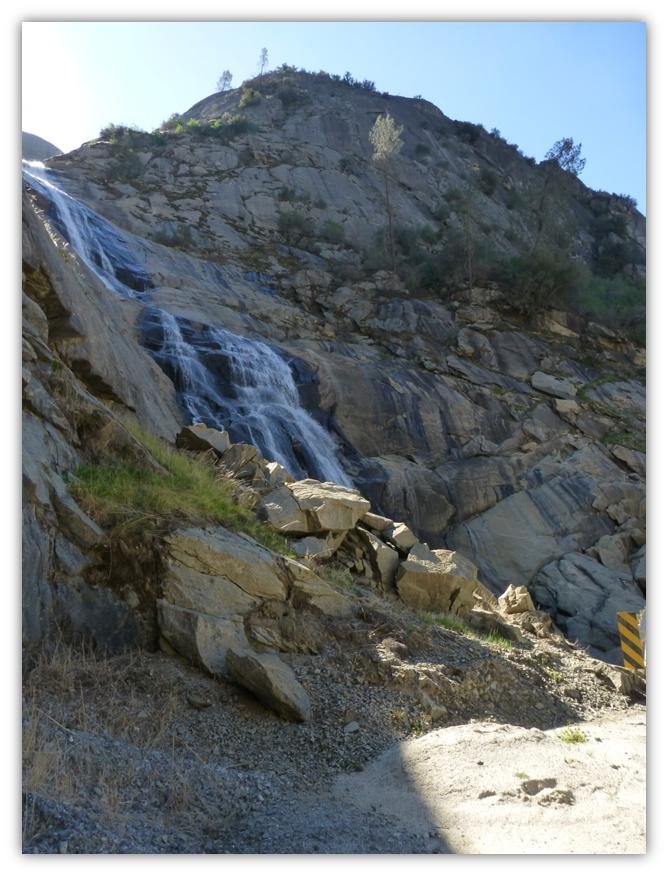
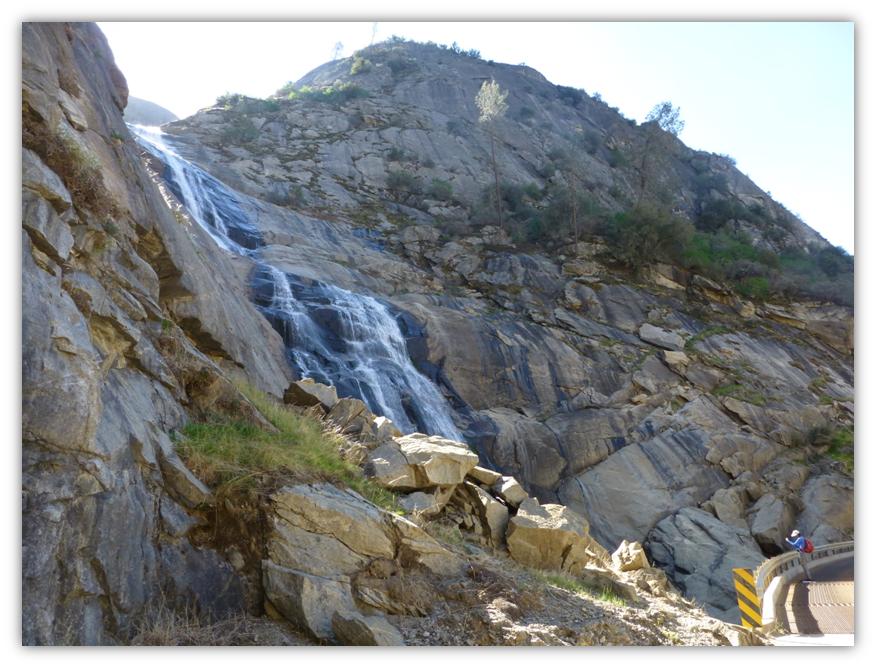
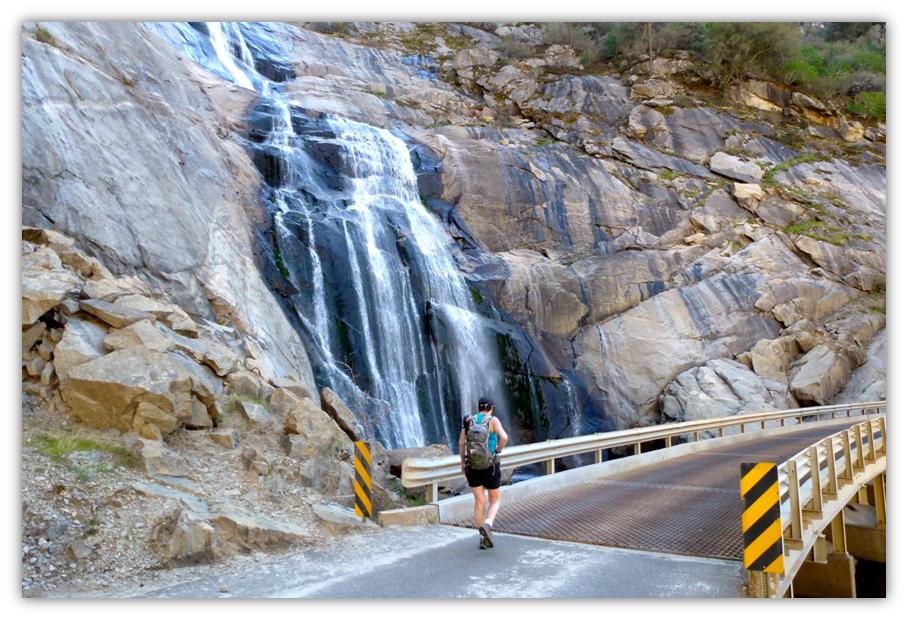
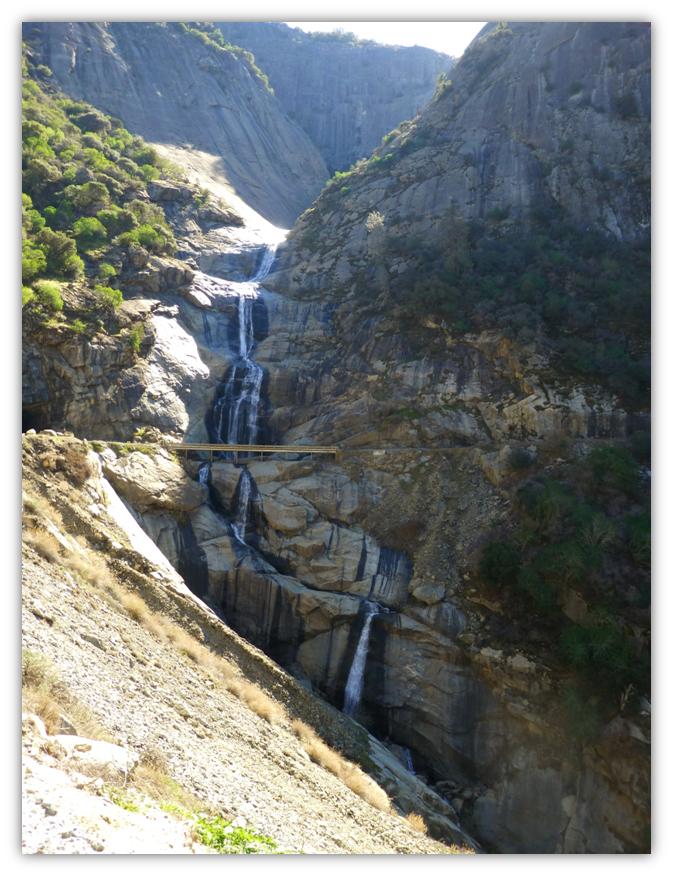
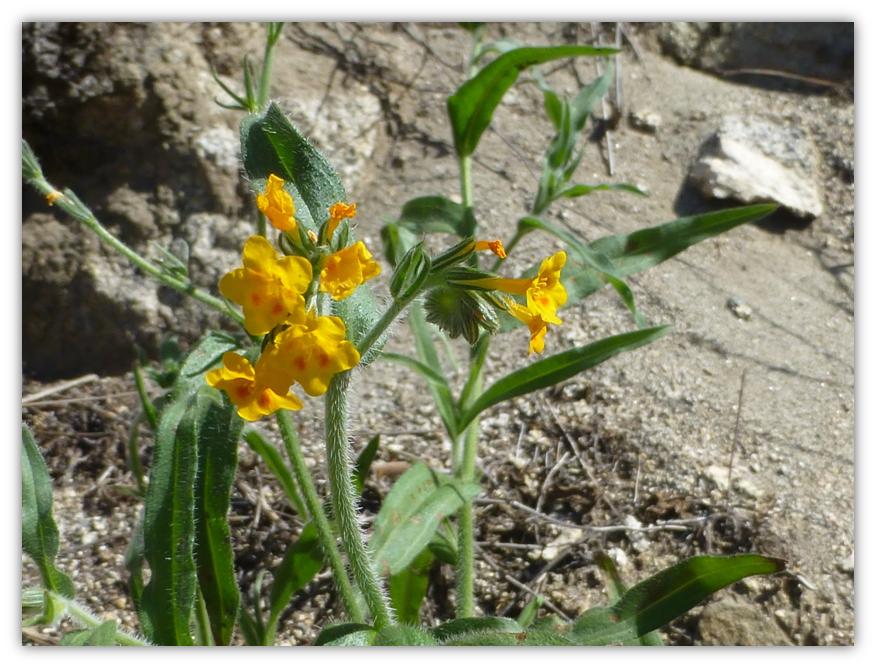
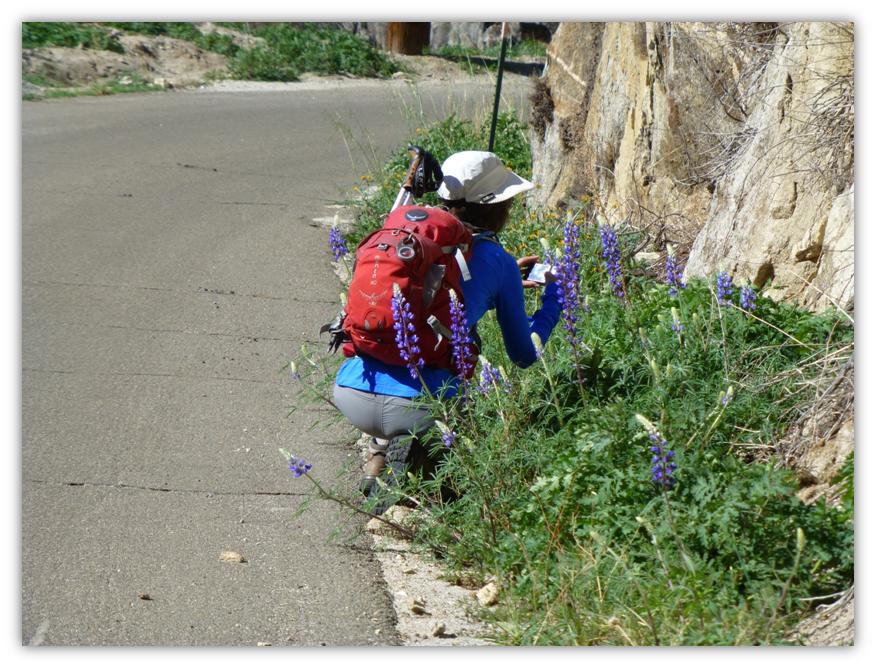

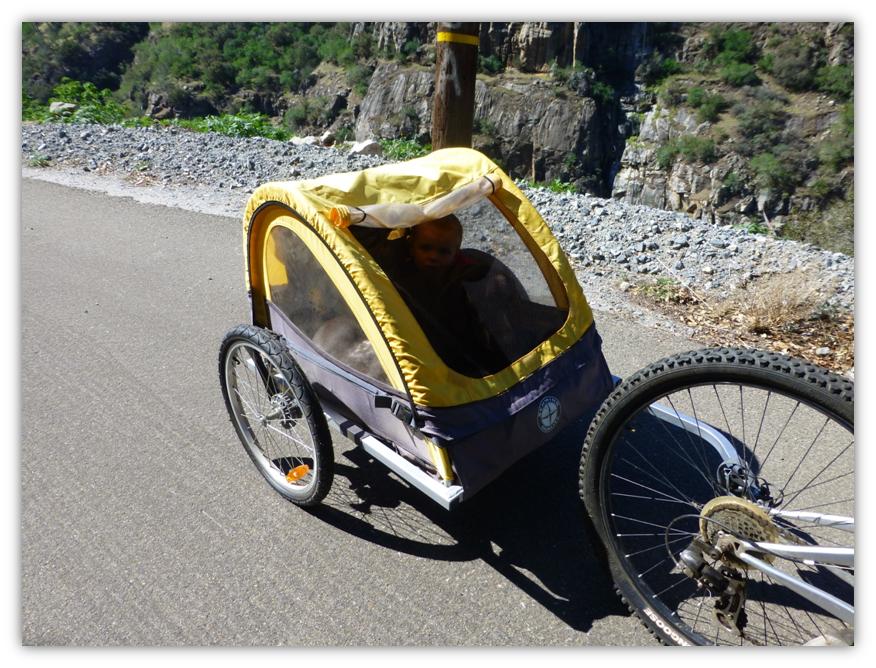
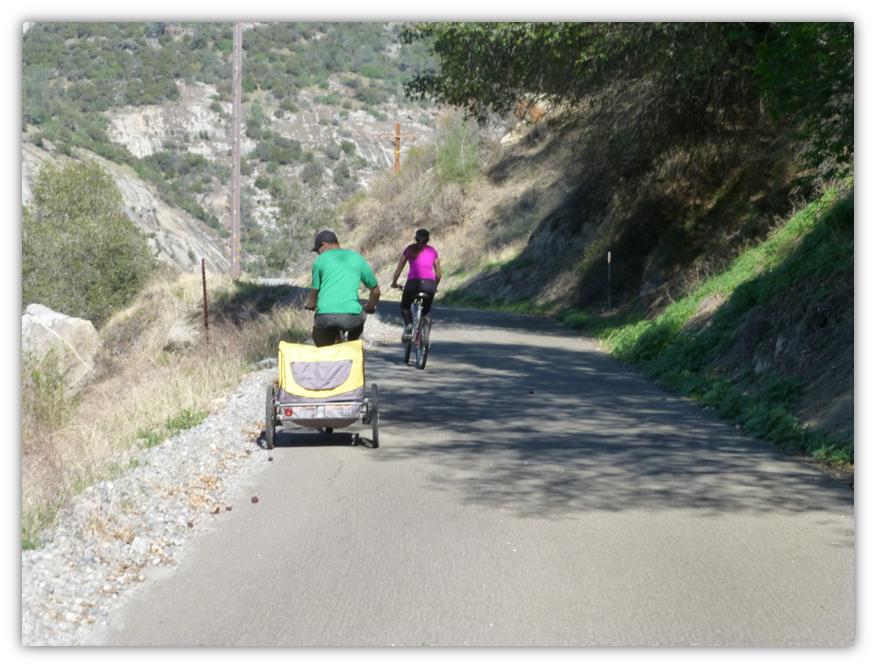
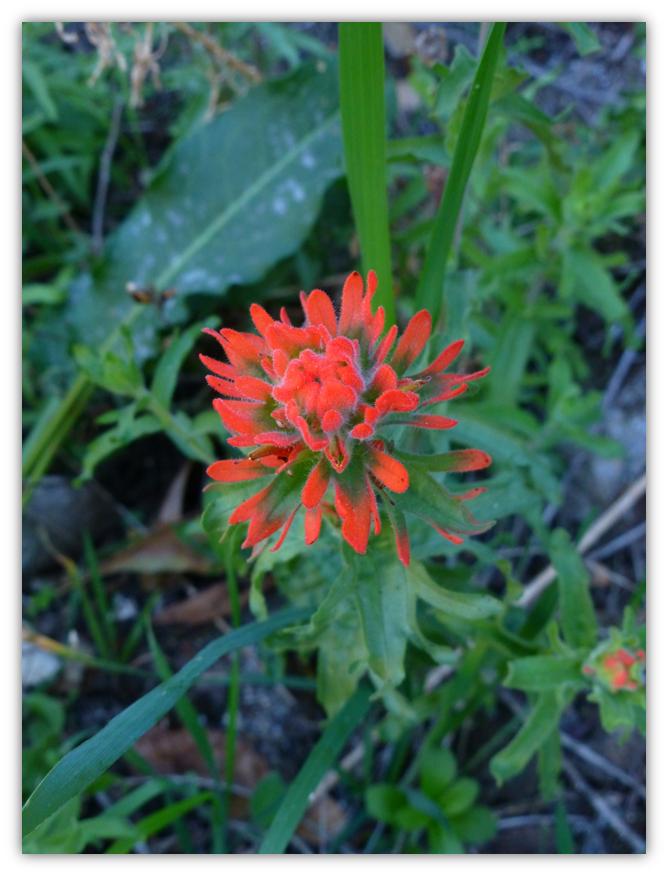
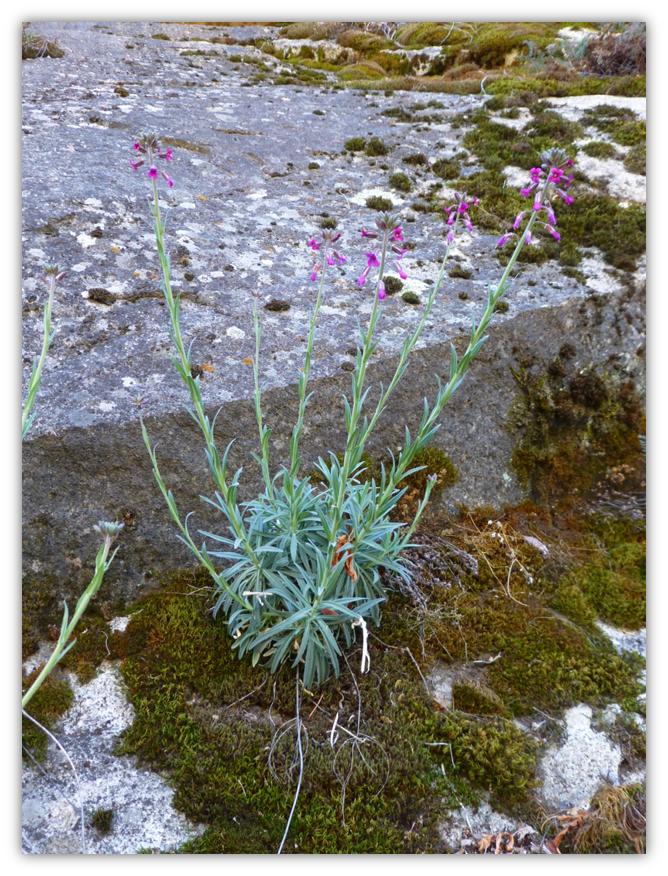
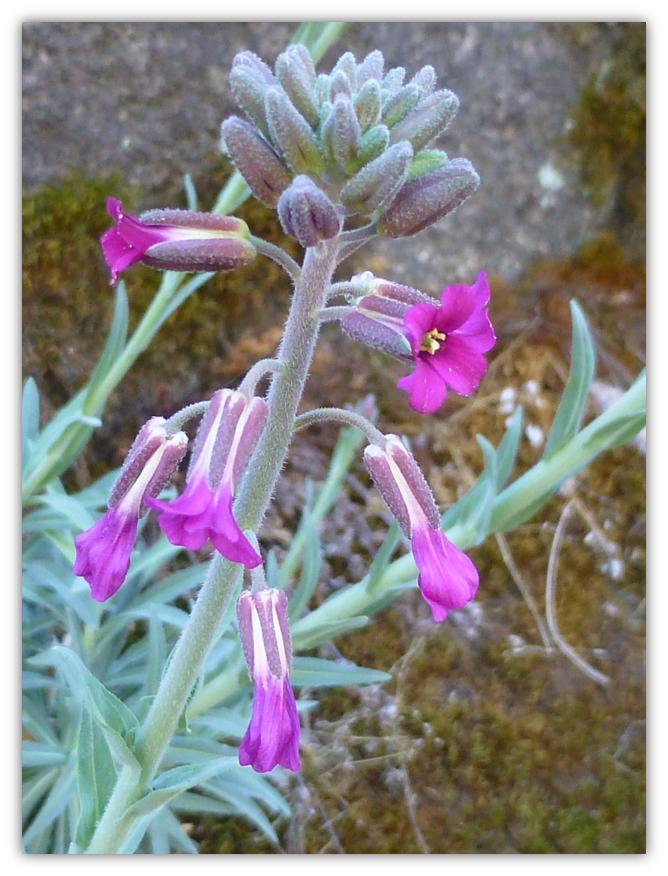
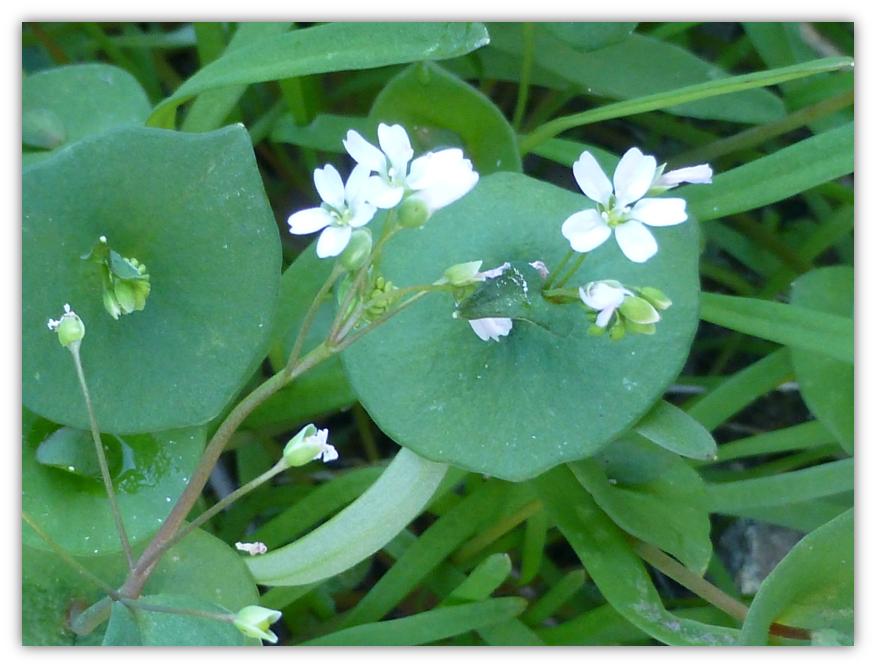
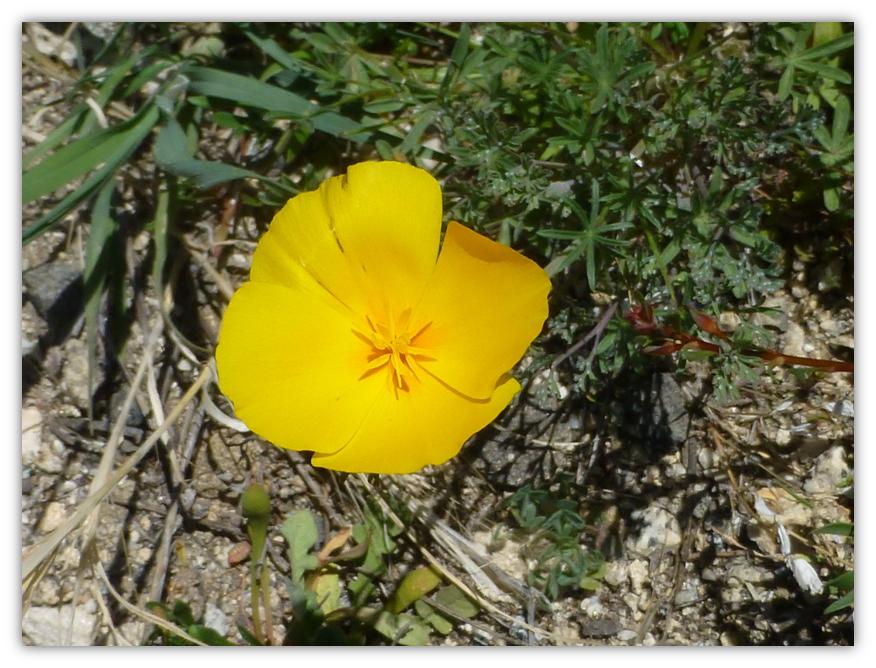
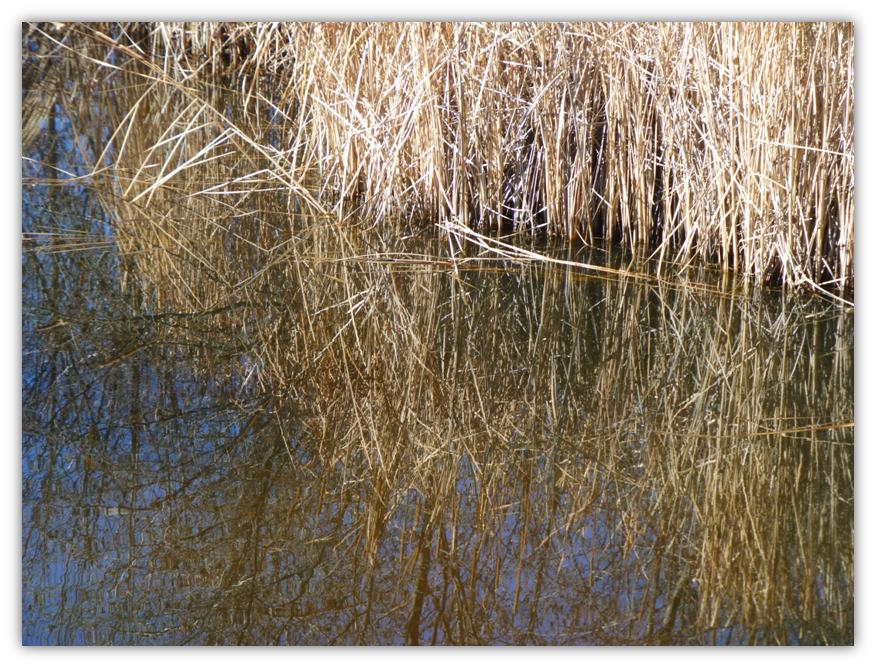
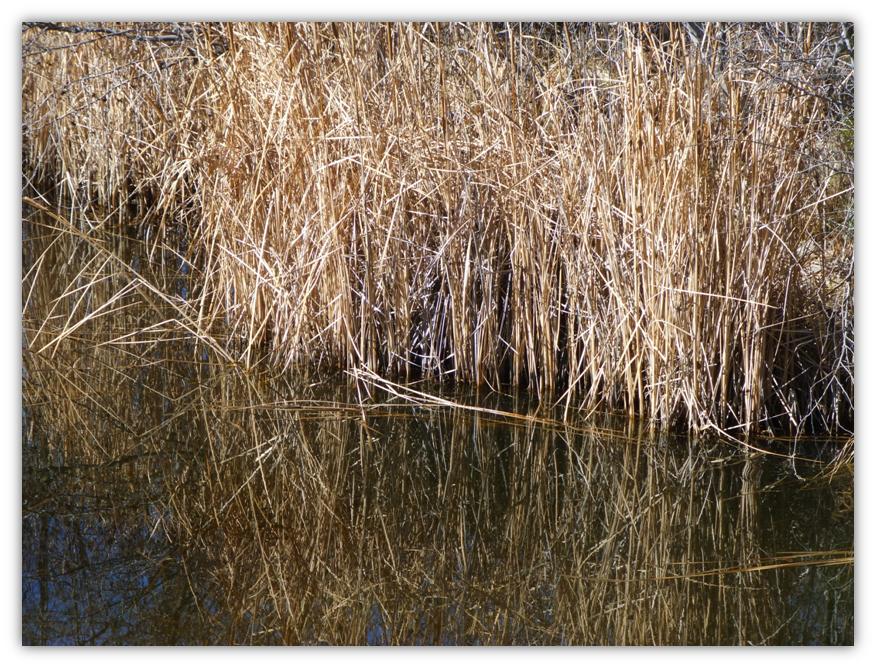
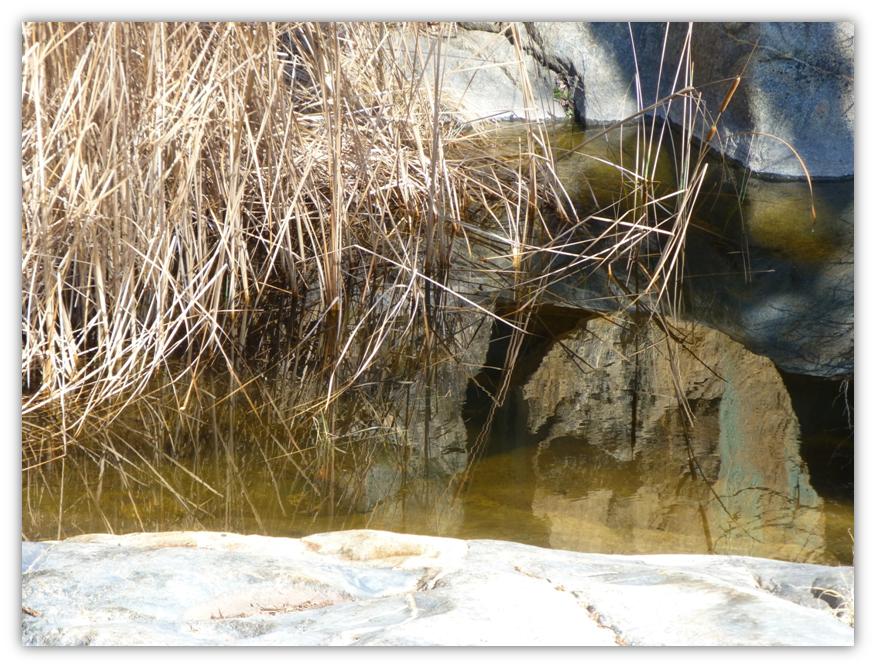
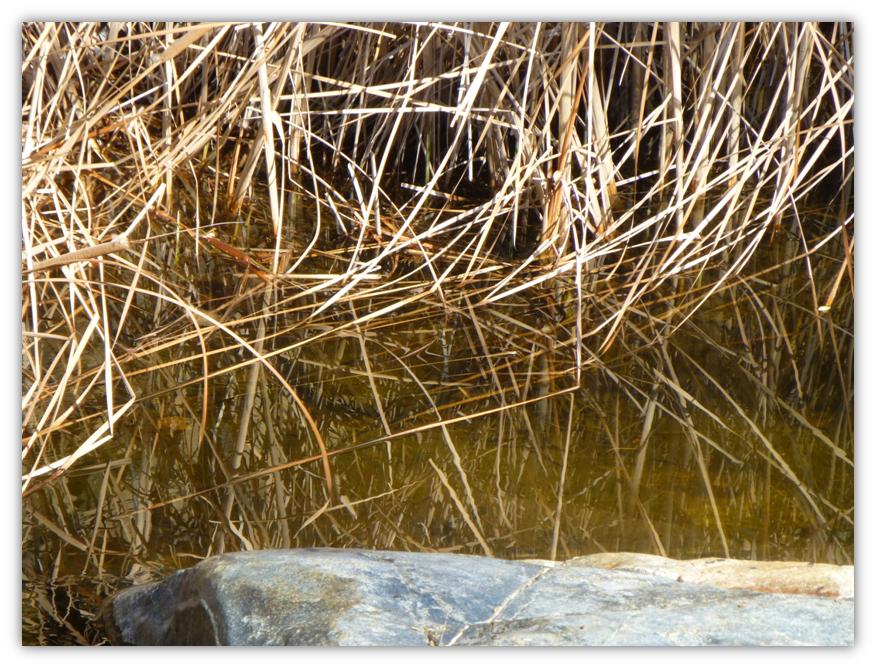
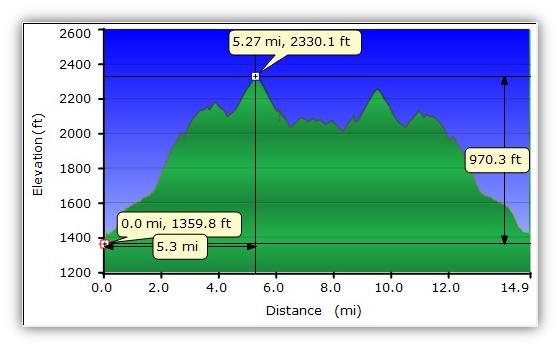
http://www.ohranger.com/sierra-natl-forest/poi/redinger-lake


